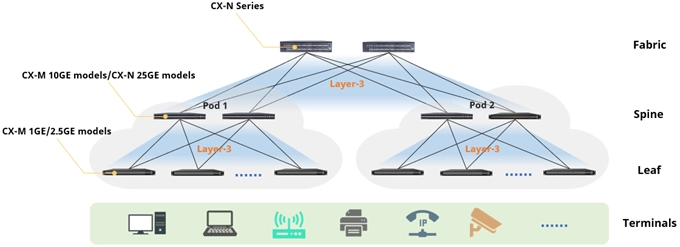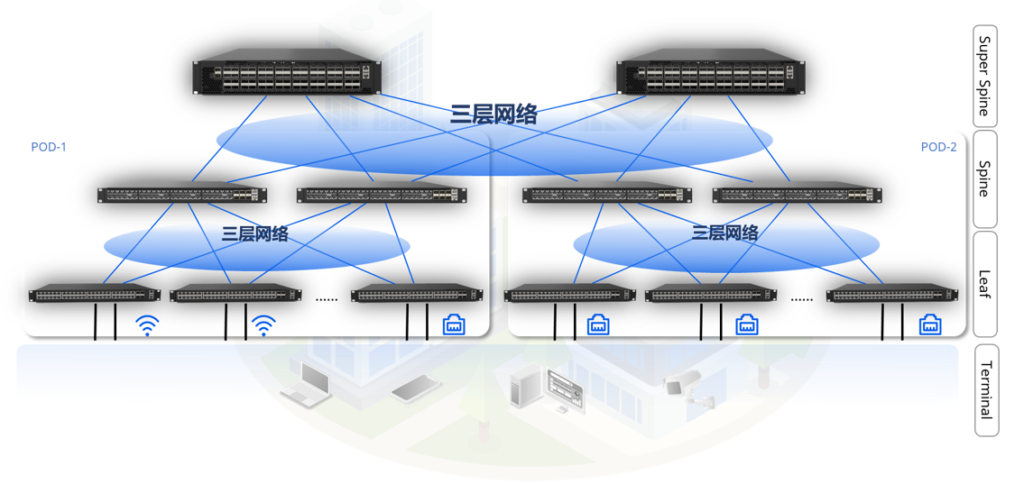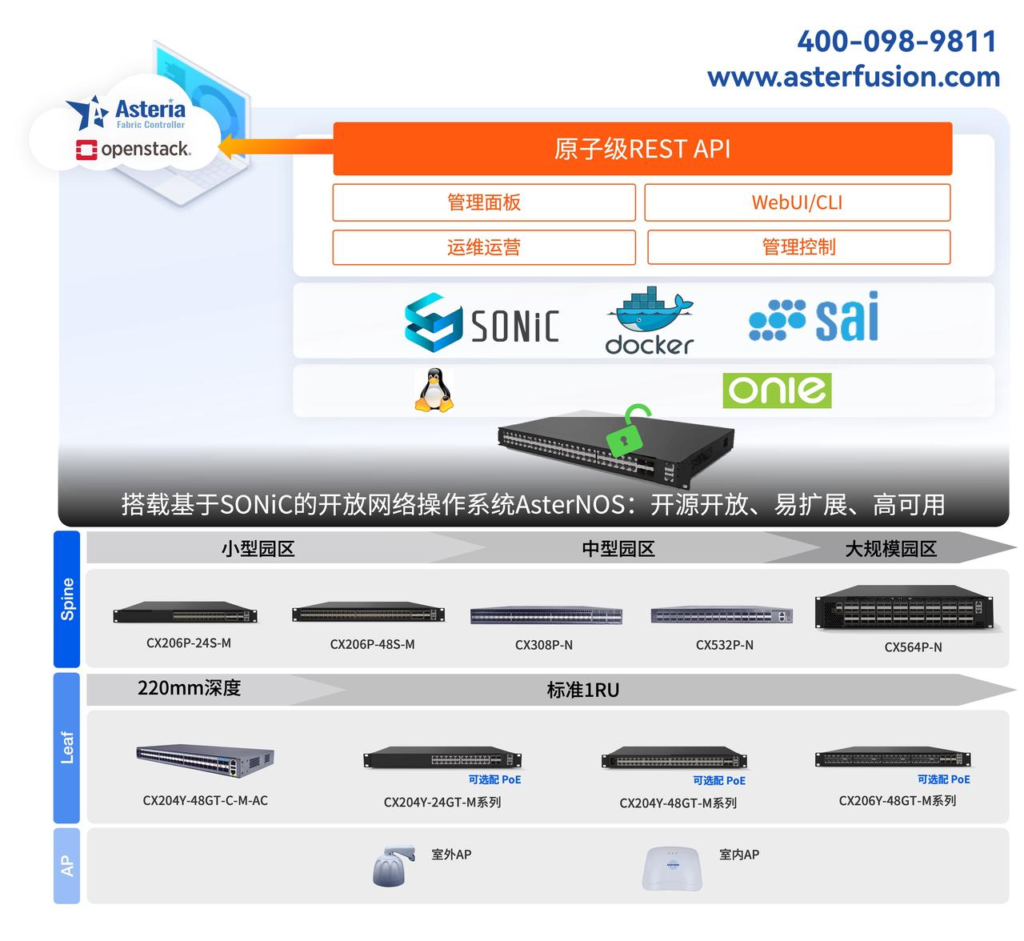Data Center Networking Technology Helps Improve Enterprise Network Efficiency
Read more
What is Leaf/Spine Architecture in networking?
The leaf/spine architecture is a type of network topology that is widely used in data centers.
It is a two-tier architecture that consists of two types of switches: leaf switches and spine switches. The leaf switches are responsible for connecting the servers, while the spine switches are responsible for connecting the leaf switches.
Benefits of Using Leaf/Spine Network Architecture
If you are considering a new network topology for your data center, the leaf/spine architecture is a good option to consider. It offers a number of advantages that can help you improve the performance of your network.
- Scalability: The leaf/spine architecture is very scalable, as it can be easily expanded by adding more leaf switches or spine switches. This makes it a good choice for data centers that are growing rapidly.
- Reliability: The leaf/spine architecture is very reliable, as there are multiple paths between any two servers. This means that if one path fails, there is another path that can be used.
- Efficiency: The leaf/spine architecture is very efficient, as it minimizes the amount of traffic that needs to be routed through the spine switches. This can improve performance and reduce congestion.
- Manageability: The leaf/spine architecture is easy to manage, as all of the switches are connected to a single management plane. This makes it easy to configure and troubleshoot the network.
Data Center Networking Technology Helps Improve Enterprise Network Efficiency
With the changes in the market and technology, cloud networking has advanced tremendously in the past two decades. Today, although cloud network architecture was born from enterprise campus network architecture, its development has long surpassed the latter-both in network architecture and in hardware equipment, scalability, and operation and maintenance capabilities, the cloud network has made great strides compared to the traditional enterprise network.
Refer to:Asterfusion’s Cloud Enterprise Network Solution

The Leaf/Spine architecture is flatter and easier to scale horizontally, while shortening the east-west communication path and reducing communication latency. With this architecture, we can use single-chip box switches to build a more efficient and streamlined next-generation enterprise network.
Compared to traditional networking solutions, Asterfusion’s full layer3 network horizontal scaling solution(Leaf/Spine network architecture)can reduce large enterprise network construction and operation costs by more than 40%.
Besides Leaf/Spine network architecture, Asterfusion makes comprehensive changes with advanced technical concepts in cloud data centers such as Arp-to-Host and distributed gateway,no CAPWAP tunnels to enable more efficient WiFi roaming and O&M with only 2-3 sets of configuration template files…
All these changes will bring the most direct value to the owners and operators of the campus network: reduce the cost of network construction, improve the efficiency of network operation, and support the possibility of unlimited innovation.
For more information, visit: Introducing Leaf/spine Network Architecture from DC to Enterprise Network or send email to sales@asterfusion.com




